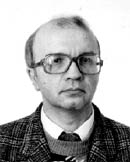Contents: 2024 | 2023 | 2022 | 2021 | 2020 | 2019 | 2018 | 2017 | 2016 | 2015 | 2014 | 2013 | 2012 | 2011 | 2010 | 2009 | 2008 | 2007 | 2006 | 2005 | 2004 | 2003 | 2002 | 2001
2005, 34
Scenario of the acoustical speech rhythms as a tool for researching of brain functioning
language: Russian
received 18.10.2005, published 15.11.2005
Download article (PDF, 350 kb, ZIP), use browser command "Save Target As..."
To read this document you need Adobe Acrobat © Reader software, which is simple to use and available at no cost. Use version 4.0 or higher. You can download software from Adobe site (http://www.adobe.com/).
ABSTRACT
Possible speech rhythms form a set or scenario of rhythms. In this scenario there are both regular rhythms and chaotic rhythms. Regular rhythms correspond both to child speech rhythm and to fluency disorders like repetitions occurring in stuttering speech. Chaotic rhythms correspond to the fluent speech of normal speakers. Each rhythm corresponds to its control parameter in scenario. This control parameter is proportional to the inhibitory activity, i.e. to relative number of inhibitory neurons emitting spikes per second in the given link of neural structures' hierarchy responsible for arising of the given rhythm. Rhythm complication occurs due to the increasing of inhibitory level in neural hierarchy. For example, the first complication of the basic phonetic rhythm occurs due to increasing inhibition from the side of striatum on pallidum. Further rhythms complications, up to chaotic rhythms, have place due to increasing inhibition from the cortex onto subcortical structures of different kind. In addition to the inhibition activity, there is excitatory activity, i.e. relative number of excitatory neurones emitting spikes per second in given neural ensemble concerning the emotion sphere, supposedly. This activity can reveal itself either as interaction between subcortical structures of the same level of neural hierarchy in form of emotional state of speaker, or as hemicerebrum interactions at the shaping of syllabic-synharmonic rhythm typical for the normally organised speech. These features of rhythmic and emotional behaviour of the speaker allow us to establish that the scenario of the acoustical speech rhythms is a tool for researching of brain functioning
8 pages, 2 figures
Сitation: O.P. Skljarov. Scenario of the acoustical speech rhythms as a tool for researching of brain functioning. Electronic Journal “Technical Acoustics”, http://www.ejta.org, 2005, 34.
REFERENCES
1. Скляров О. П. Нейрофизиологические аспекты рекуррентного функционирования «скрытых» переменных речевого аппарата. Журнал Высшей Нервной Деятельности, 1998, том 48, вып. 5, 827–835.
2. Скляров О. П. Самоорганизационная природа речевого ритма (модель источника голоса). Биофизика, 1998, т. 43, № 1, 152–158.
3. Skljarov O. P. Nonlinear neurodynamics in representation of a rhythm of speech. Journal of Biological Physics. Kluwer Acad. Publ, 1999, vol. 25, № 2–3, 223–234.
4. Скляров О. П. Биофизические основы принципа универсальности восприятия речи. Биофизика. 2003, т. 48, № 3, 553–557.
5. Скляров О. П. Лагранжева формулировка проблемы самоорганизации нейронного ансамбля при учете нелинейной диссипации энергии. Биофизика, 2003, т. 48, № 4, 701–705.
6. Винарская Е. Н., Богомазов Г. М. Возрастная фонетика. STT, Томск, 2001, 283 с.
7. Сбитнев В. И. Перенос спайков в статистических нейронных ансамблях. III. Фазовый переход в модели поля СА3 гиппокампа. Биофизика, 1977, т. 22, 523–528.
8. Кудряшов А. В., Яхно В. Г. Распространение областей повышенной импульсной активности в нейронной сети. В сб. «Динамика биологических систем, Межвузовский сборник, вып. 2, г. Горький, 1978.
9. Brown G. B., Cooke M., Mousett E. Are neural oscillations the substrate of auditory grouping? Proc. of the Workshop on the Auditory Basis of Speech Percept. Keele, 1996. 174–179.
10. Ходжкин А. Нервный импульс. Пер. с англ. М.: Мир, 1965, 125 c.
11. FitzHugh, R. Impulses and physiological states in theoretical models of nerve membrane. Biophysical Journal, 1961, 1, 445–466.
12. Лопотко Е. С., Соколова Л. А. Эффективность лечения заикания в условиях стационара при использовании модифицированной методики логокоррекционной работы. В кн. Механизмы речевого процесса и реабилитация больных с речевыми нарушениями. Под ред. Ю. И. Кузьмина. М., 1989, 107–111.
13. Скляров О. П. Элементы теории ритма речи на основе физической феноменологии его нарушений. Автореф. дис. … докт. физ.-мат. наук / О.П. Скляров. СПб, СПб Гос. Университет, 1999, 32 с.
14. Скляров О. П. Хаос и ритм речи в норме и при заикании. Изд-во «ЛЭТИ», СПб, 2002.
15. Скляров О. П. V/U-ритм речи при чтении как индикатор состояния функции речевого дыхания у заикающихся. Электронный журнал «Техническая акустика», http://www.ejta.org, 2004, 16.
16. Сертификационное Свидетельство № 26-05/03-00023 от 26 мая 2003 г. на компьютерную программу «Сегментация Речевого Сигнала» (автор программы – Скляров О. П.).
 |
Oleg Skljarov received the BS degree in 1970, and the PhD degree in 1975 from Physical Faculty of the St.Petersburg State University (Russia). In 1975-1982, he worked at State Optical Institute as a scientific researcher. In 1982-1990 he was a chief of scientific sector in the Acoustical Department of the Telecommunication Company. Since 1990, he was been a Senior Scientific Researcher at Institute of Ear, Throat, Nose & Speech. In 2000 he received the Doctoral degree of Physical-and-Mathematical Sciences from St. Petersburg State University. His research interests included soft computing (neural networks and dynamical chaos); critical behaviour of speech rhythm in both theory and applied aspect (correction of the stuttering); and non-linear phenomena in both biology and acoustics of speech. |
